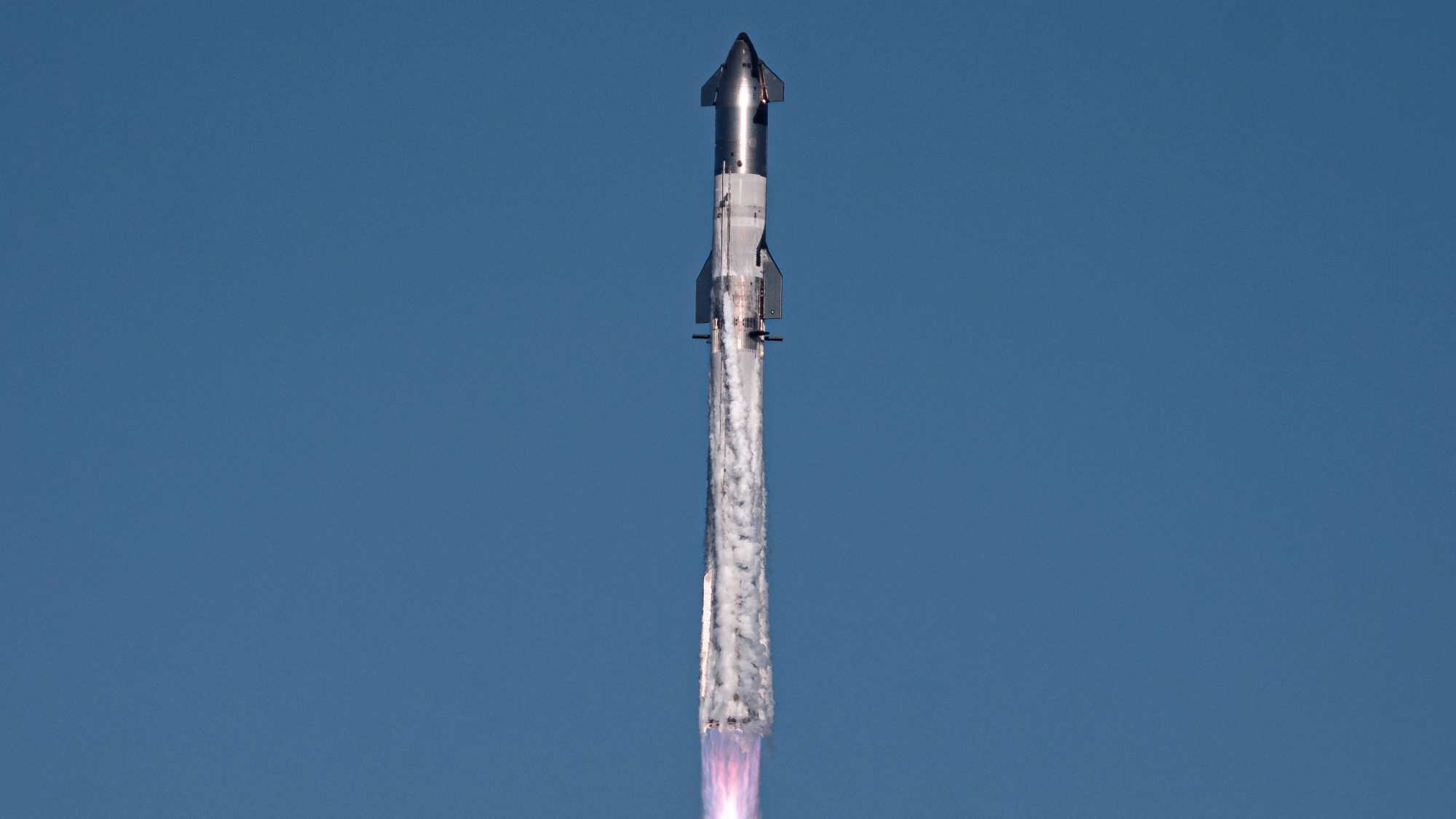SpaceX likely to get FAA approval for 25 Starship launches in 2025

SpaceX wants to ramp up flights of its Starship megarocket next year, and regulations apparently won't stand in the way.
On Wednesday (Nov. 20), the U.S. Federal Aviation Administration (FAA) released a draft environmental assessment (EA) of Starship operations at Starbase, SpaceX's facility in South Texas.
The 160-page document, which you can read here, approves the company's request to boost the number of annual Starship liftoffs from Starbase by a factor of five, from the currently allowed five to 25 — SpaceX's reported launch target for 2025.
The draft EA also approves 25 landings for both Starship elements — its Super Heavy booster and "Ship" upper stage — back at Starbase. These landings would occur at the launch tower, which would catch the returning vehicles using its "chopstick" arms. SpaceX has achieved such a catch once, snagging Super Heavy during the fifth Starship test flight on Oct. 13.
Related: What's next for SpaceX's Starship after its successful 6th test flight?
SpaceX is developing Starship, the biggest and most powerful rocket ever built, to help humanity settle the moon and Mars. The 400-foot-tall (122 meters) vehicle is designed to be fully and rapidly reusable, and SpaceX plans to eventually conduct multiple Starship launches per day.
The stainless-steel megarocket has launched six times to date, all of them test flights from Starbase. The most recent liftoff, which occurred on Tuesday (Nov. 19), was a success, though a communications issue prevented Super Heavy from coming back to Starbase for a chopsticks catch. Instead, the booster diverted to perform a controlled splashdown in the Gulf of Mexico.
Breaking space news, the latest updates on rocket launches, skywatching events and more!
The newly released EA is just a draft, so its findings are preliminary. The FAA will hold four in-person public meetings in South Texas — two apiece on Jan. 7 and Jan. 9 — and one virtual conclave on Jan. 13 to discuss the EA. You can learn more about them here.
SpaceX and its founder and CEO, Elon Musk, have complained about the FAA a lot recently, claiming that the agency has stifled Starship's progress — and the American launch industry overall — with overly burdensome regulation.
Companies in the spaceflight sector, and in most if not all other industries, will likely have freer rein to do as they please after President-elect Donald Trump takes office in January. And Musk will have a say in this effort; Trump has appointed the billionaire entrepreneur to co-lead the "Department of Government Efficiency," an advisory group that aims to help "dismantle government bureaucracy" and "slash excess regulations."

Michael Wall is a Senior Space Writer with Space.com and joined the team in 2010. He primarily covers exoplanets, spaceflight and military space, but has been known to dabble in the space art beat. His book about the search for alien life, "Out There," was published on Nov. 13, 2018. Before becoming a science writer, Michael worked as a herpetologist and wildlife biologist. He has a Ph.D. in evolutionary biology from the University of Sydney, Australia, a bachelor's degree from the University of Arizona, and a graduate certificate in science writing from the University of California, Santa Cruz. To find out what his latest project is, you can follow Michael on Twitter.
